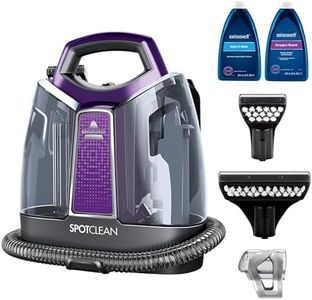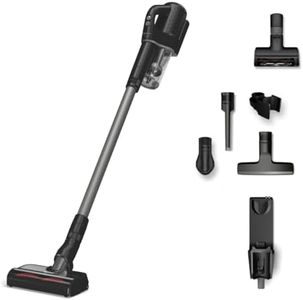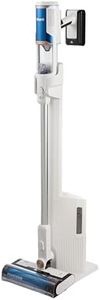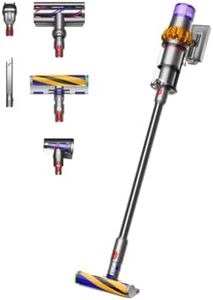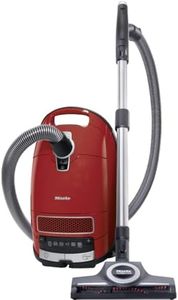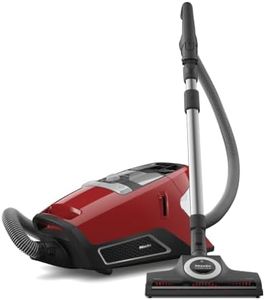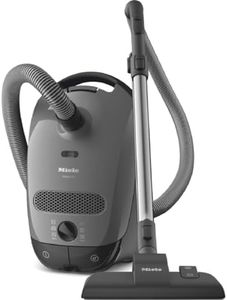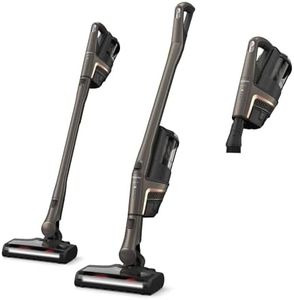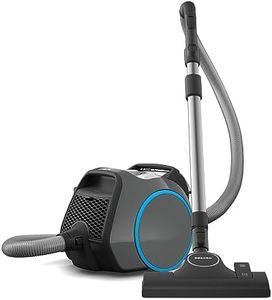We Use CookiesWe use cookies to enhance the security, performance,
functionality and for analytical and promotional activities. By continuing to browse this site you
are agreeing to our privacy policy
10 Best Vacuums For Stairs
From leading brands and best sellers available on the web.Buying Guide for the Best Vacuums For Stairs
Choosing the right vacuum for cleaning stairs involves thinking about your home's layout, the surfaces on your stairs, and your own preferences for convenience and ease. Stairs can be tricky to clean because they often have tight corners, different types of flooring, and make maneuvering a traditional vacuum difficult. A good vacuum for stairs should be easy to handle, effective at picking up dirt, and able to reach every edge and crevice. Taking your own physical comfort and the unique challenges of your staircase into account will help you find a vacuum that makes this chore much easier.Weight and PortabilityThe weight and how easy it is to move the vacuum matter a lot for stairs. A heavy vacuum is hard to lift or balance on each step, making cleaning more tiring and potentially unsafe. Lighter models and those specifically designed for portability are much easier to use on stairs. Portable vacuums come in stick, handheld, or compact canister designs. Generally, a vacuum under ten pounds is much more manageable. If you have limited strength or many flights of stairs, a lighter, more portable vacuum will be essential.
Type of VacuumThere are several types, including upright, canister, stick, and handheld. Upright vacuums are less ideal for stairs due to their size, but some have lift-away features. Canisters with long hoses are more flexible. Stick and handheld vacuums are popular for stairs because they are lighter and easier to control in tight spots. Decide based on how much cleaning versatility you need—if you only need it for stairs, a handheld model could be perfect. For users who want one vacuum for the whole house, a canister or convertible stick might be better.
Corded vs. CordlessCordless vacuums offer freedom to move without worrying about power outlets or tangled cords, making stair cleaning easier. However, they have limited battery life, which might not suit larger homes. Corded models provide unlimited run time but limit your range. If you have many, long staircases or want speed and mobility, cordless is best, provided the battery life matches your cleaning routine. For those who prioritize uninterrupted power, corded is better.
Suction PowerSuction power is a measure of how well a vacuum can lift dirt and debris. Stairs often collect dust, crumbs, pet hair, and more, so strong suction is key. Entry-level models may offer enough suction for light debris but struggle with deep cleaning. Medium suction handles general dirt and pet hair, while high-suction vacuums offer deep cleaning, even in carpet fibers. Pet owners or those with carpeted stairs should look for higher suction vacuums. Hardwood or lightly soiled stairs can get by with less.
Attachment ToolsA good set of attachments makes stair cleaning much easier. Look for a vacuum with a crevice tool for corners, an upholstery or motorized brush for fabric steps, and a dusting brush for hard surfaces. Detachable heads or mini motorized tools are especially useful for stairs. When picking, think about the surfaces on your stairs and whether you'll need specialized attachments for pet hair, delicate materials, or tight spaces.
Ease of Use and ErgonomicsComfort is important when cleaning stairs. Features like a comfortable handle, easy-to-use controls, and a balanced design all make cleaning safer and reduce fatigue. Long hoses or extendable wands help minimize bending and reaching. Try to find a vacuum that feels comfortable to hold and is easy to maneuver—especially if you have multiple staircases or mobility limitations.
Dustbin or Bag CapacityThe size of the dustbin or bag affects how often you'll need to empty it. Since stair cleaning doesn’t usually fill a bin quickly, this spec is more about personal convenience. Smaller, lighter vacuums tend to have smaller capacity, but if you have a lot of stairs or shed-prone pets, a larger bin could be more practical. Pick according to your tolerance for frequent emptying versus carrying extra weight.

